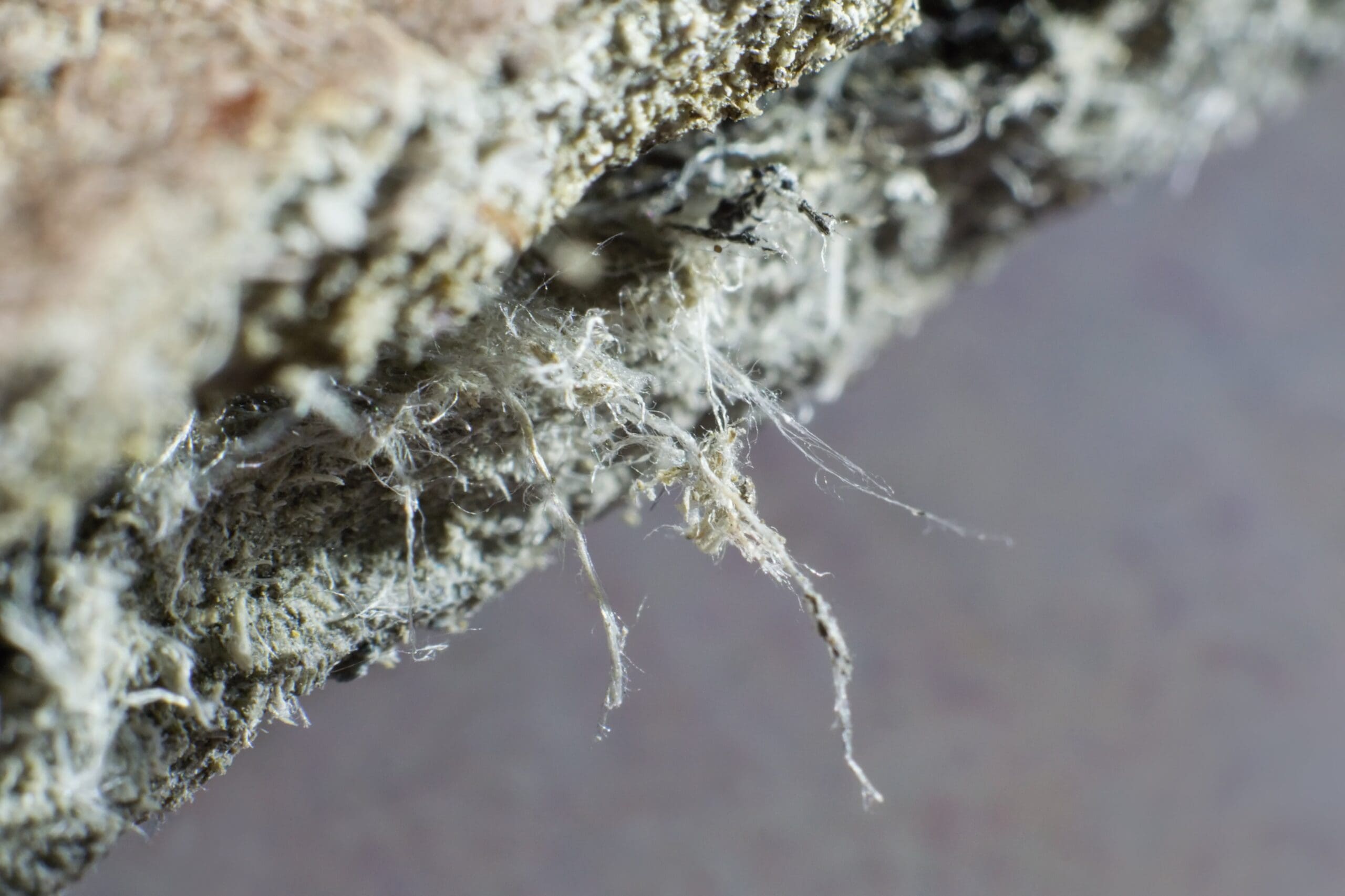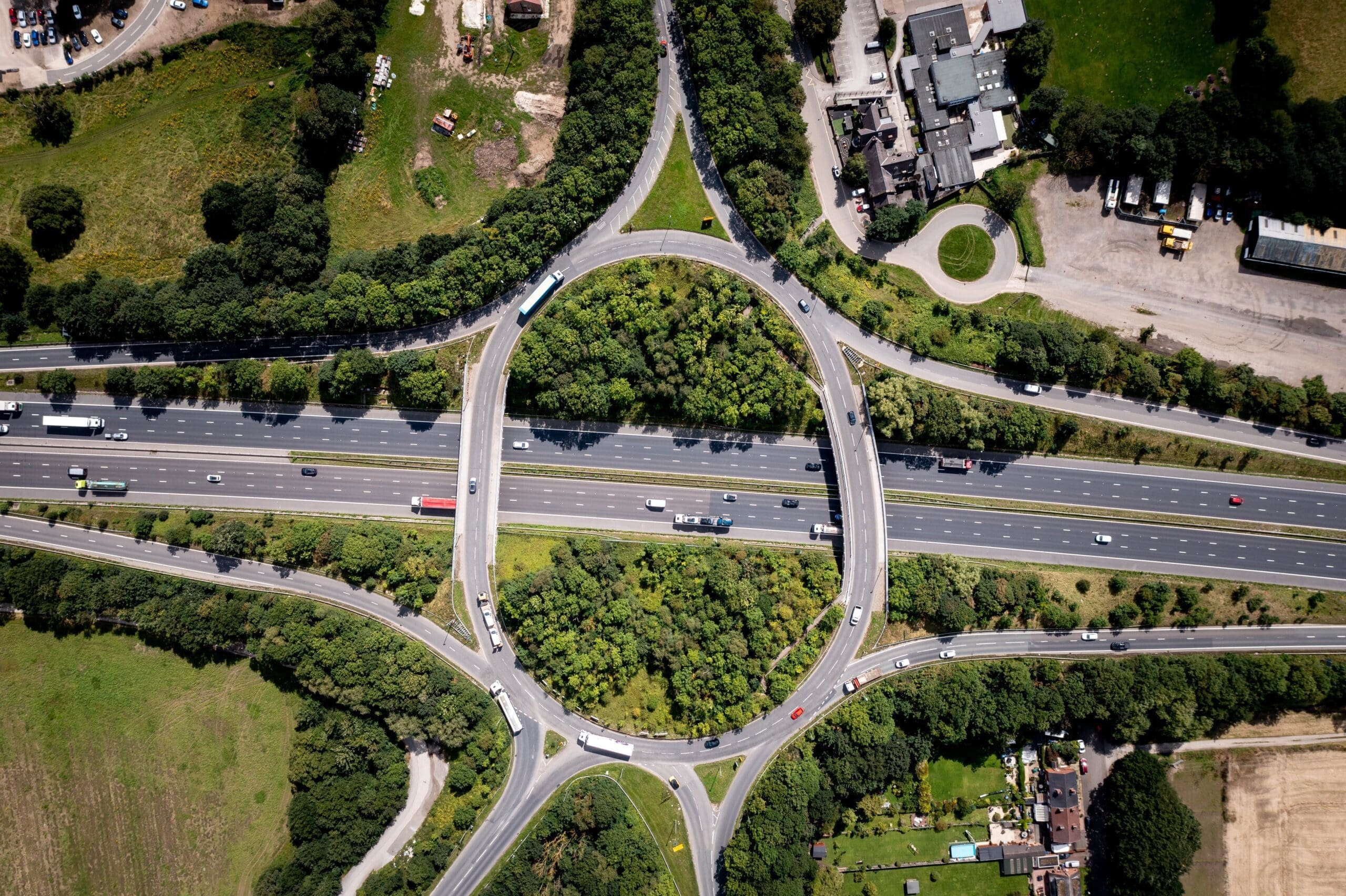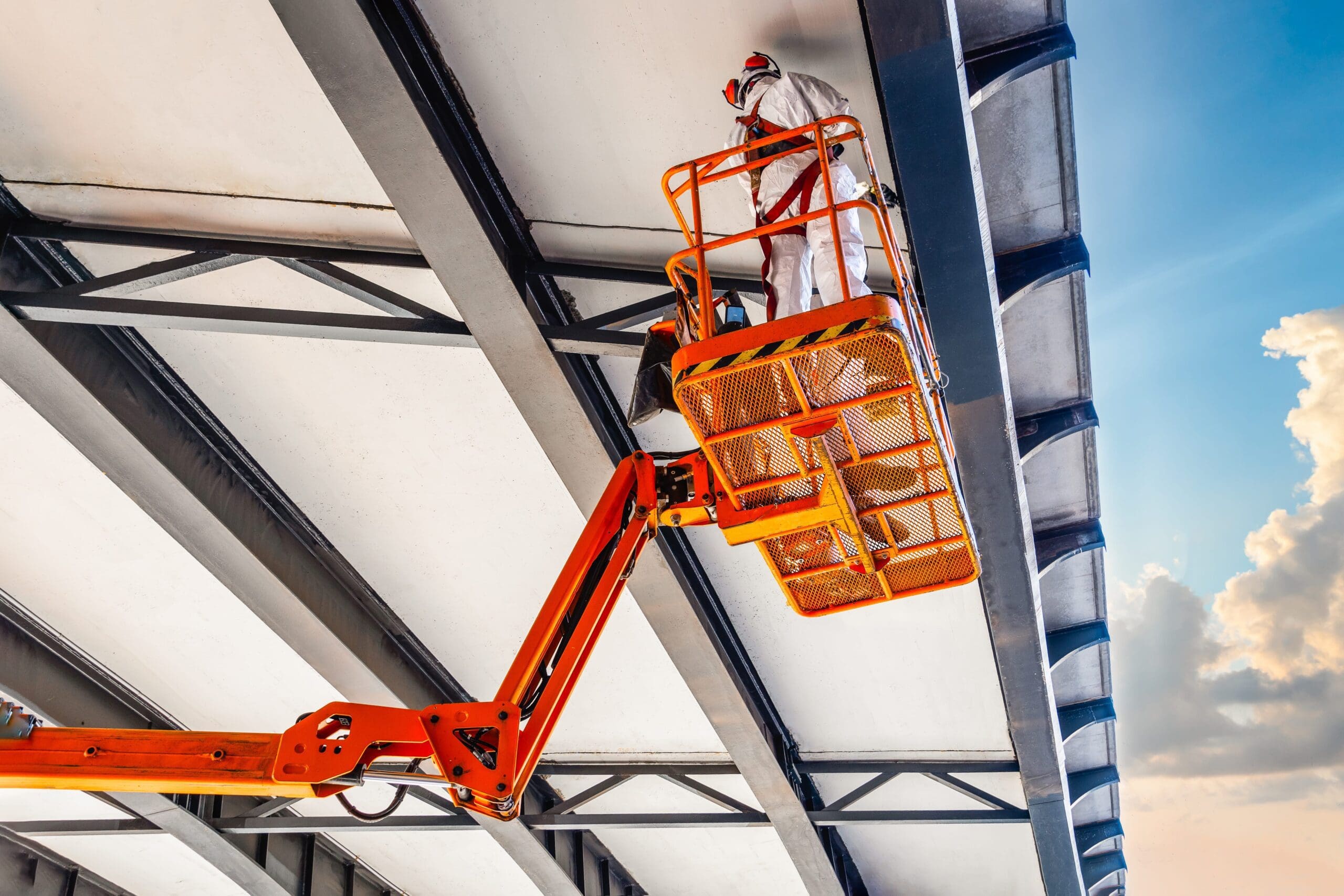Infrastructure Engineering Solutions
Asbestos Management Services
Safeguard people and the environment with our comprehensive Asbestos Management solutions.
Explore our process
Interested? Let’s talk.
Send us an enquiry
Who we’ve partnered with...





A snapshot of Asbestos Management
At BES Group, we’re proud to assist duty holders and landowners with our comprehensive Asbestos Services. We’ll work with you to manage the presence of asbestos safely and legally, in compliance with the Control of Asbestos Regulations 2012, while protecting people, assets and the environment.
An Asbestos Survey is used to determine the location, type and condition of asbestos containing materials (ACM’s) present in a particular area. ACM’s can be found within many places or products such as highways bridges, railway structures, pipes, cavity walls, ceilings, vinyl flooring and much more.
We provide professional and tailored Asbestos Services compliant with HSG 264.
Our comprehensive Asbestos Management solutions include:
- Risk assessment: Safety compliance is our priority, at every step of the process – for people and the environment.
- Asbestos Management plans: Tailored asbestos planning for your commercial premises or infrastructure, including closed access.
- Asbestos surveys: We can lead and support with management, refurbishment, demolition, and reinspection surveys.
- Asbestos sampling: We can provide data-driven insights on samples with the asbestos testing service in our laboratory.


Let's talk about Asbestos Management
Send one of the team a message
Not seeing what you expected?
Try using our search
Explore what our clients say
Asbestos Specialist Surveys
Speak to us about the processSectors we service
Dive into the diverse landscapes where BES Group sparks innovation and drives impact.
Asbestos Management at BES Group
Explore Asbestos Management- Legal Duties for Asbestos Management
- Types of sampling in Asbestos Management Surveys
- Key Benefits of Asbestos Management
For industrial and commercial premises, duty holders are legally responsible for ensuring that ACM’s are properly managed, under the Control of Asbestos Regulations 2012.
A duty holder is an individual that is responsible for health and safety of a building. Highway and railway infrastructure owners also require a duty holder that is accountable for health and safety, which includes the duty to manage asbestos.
Employers hold a legal responsibility for ensuring that their workforce is following strict safety protocols if they are in contact with ACM’s, including training and correct personal protective equipment (PPE). Asbestos must be continually monitored, maintained, and documented, to ensure safety and abide by legal requirements.
Asbestos is a hazardous substance and needs to be carefully maintained in compliance with HSG 264.
Disturbances such as remedial work or demolitions may expose asbestos fibres and cause further damage, which can lead to severe health consequences for people that may inhale these fibres. This contamination can also spread to the environment, which can pollute surrounding soil and water sources.
Sampling is an integral part of Asbestos Management surveys, as this data can be used to provide valuable insights into key factors such as the location, type, percentage level and condition of ACM’s.
Our asbestos sampling methods include:
- Soil sampling: This method involves taking several samples from an area of soil where asbestos is suspected, which is then tested to determine the percentage of asbestos fibres within the environment.
- Bulk sampling: This sampling process involves testing bulk materials (materials that are visible but may not be fully identifiable) and testing to see what asbestos materials are present, including whether it is amphibole or serpentine.
Infrastructure specialists
We pride ourselves on our expertise and advanced skill for Asbestos Management across the infrastructure and transport sector. We hold certifications in Personal Track Safety (PTS) for railways and a National Highways safety passport.
Bespoke planning
We will work with you to establish a detailed and actionable Asbestos Management plan to help you assess and mitigate risks, manage asbestos removal safely and stay compliant with the Control of Asbestos Regulations 2012.

Access solutions
Our highly qualified team have dedicated experience to access challenging environments and confined spaces, using advanced access solutions such as diving, pontoon and safety boat access operated by a RYA certified boat handler, rope access working to Industrial Rope Access Association (IRATA) guidelines, mobile tower access with the Prefabricated Access Suppliers’ and Manufacturers’ Association (PASMA) and powered access with the International Powered Access Federation (IPAF).
-
Legal Duties for Asbestos Management
For industrial and commercial premises, duty holders are legally responsible for ensuring that ACM’s are properly managed, under the Control of Asbestos Regulations 2012.
A duty holder is an individual that is responsible for health and safety of a building. Highway and railway infrastructure owners also require a duty holder that is accountable for health and safety, which includes the duty to manage asbestos.
Employers hold a legal responsibility for ensuring that their workforce is following strict safety protocols if they are in contact with ACM’s, including training and correct personal protective equipment (PPE). Asbestos must be continually monitored, maintained, and documented, to ensure safety and abide by legal requirements.
Asbestos is a hazardous substance and needs to be carefully maintained in compliance with HSG 264.
Disturbances such as remedial work or demolitions may expose asbestos fibres and cause further damage, which can lead to severe health consequences for people that may inhale these fibres. This contamination can also spread to the environment, which can pollute surrounding soil and water sources.
-
Types of sampling in Asbestos Management Surveys
Sampling is an integral part of Asbestos Management surveys, as this data can be used to provide valuable insights into key factors such as the location, type, percentage level and condition of ACM’s.
Our asbestos sampling methods include:
- Soil sampling: This method involves taking several samples from an area of soil where asbestos is suspected, which is then tested to determine the percentage of asbestos fibres within the environment.
- Bulk sampling: This sampling process involves testing bulk materials (materials that are visible but may not be fully identifiable) and testing to see what asbestos materials are present, including whether it is amphibole or serpentine.
-
Key Benefits of Asbestos Management

Infrastructure specialists
We pride ourselves on our expertise and advanced skill for Asbestos Management across the infrastructure and transport sector. We hold certifications in Personal Track Safety (PTS) for railways and a National Highways safety passport.

Bespoke planning
We will work with you to establish a detailed and actionable Asbestos Management plan to help you assess and mitigate risks, manage asbestos removal safely and stay compliant with the Control of Asbestos Regulations 2012.

Access solutions
Our highly qualified team have dedicated experience to access challenging environments and confined spaces, using advanced access solutions such as diving, pontoon and safety boat access operated by a RYA certified boat handler, rope access working to Industrial Rope Access Association (IRATA) guidelines, mobile tower access with the Prefabricated Access Suppliers’ and Manufacturers’ Association (PASMA) and powered access with the International Powered Access Federation (IPAF).
Frequently asked questions
Where can asbestos be found in commercial buildings?
Asbestos was a commonly used material in commercial settings, especially as it was widely renowned for its insulation properties and resistance to fire. ACM’s can be detected in a variety of areas within non-domestic premises, such as:
- Insulation: Walls, mattresses, soundproofing, pipes, and boiler lagging.
- Sprayed coatings: Underside roofs, steel and concrete beams, and underside flooring.
- Textiles: Ropes, yarns, cloths used for gloves and aprons, gaskets, and strings to seal hot water radiators.
- Cement: Profiled sheets, partition boards, fully compressed sheets used for tiles and slates.
- Flooring: Thermoplastic floor tiles, staircases, industrial flooring.
- PVC: Panels and cladding, reinforced plastic for cisterns, window seals and benchtops.
- Friction products: Conveyor belts, drive belts, machinery, and lifts.
When was asbestos banned in the UK?
The importation of amphibole asbestos, known as Amosite (brown) and Crocidolite (blue) asbestos, was made illegal in the UK during 1985. Chrysotile (white) asbestos was still imported and used, until it was also outlawed in 1999.
The use of asbestos in construction and production lines was made illegal due to the severe negative impact it has on health, safety, and the environment. It’s a legal obligation for non-domestic buildings and infrastructure to have a compliant asbestos plan in place, if planned remedial or demolition work is planned, and asbestos is present.
Contact us today for asbestos planning and management.
What is HSG 264 in relation to Asbestos Management?
HSG 264 are legal guidelines which legally outline how asbestos should be managed in non-domestic, commercial or industrial premises, under the Control of Asbestos Regulations 2012. This is provided by the Health and Safety Executive (HSE), who are the regulator for workplace health and safety in Britain.
The HSE strongly recommends using an accredited surveyor when conducting Asbestos Surveys. This reinforces the importance of choosing a provider that meets the highest standards of quality and reliability.
Why are Asbestos Surveys important for commercial premises?
Asbestos surveying is crucial for testing potentially contaminated areas before it is disturbed by any occupants, remedial work, and planned demolitions. Within a commercial or non-domestic environment, this is even more important as there are more people at risk and likely to be a greater amount of ACM’s present.
If asbestos is disturbed, it can release fibres, which is when it poses a greater risk. ACM’s can contaminate the surrounding environment, such as soil and water. It can also become airborne and be inhaled, causing adverse health effects which can be permanent.
What is an R and D asbestos Survey?
A refurbishment and demolition survey is sometimes referred to as an ‘r and d survey’.
An R&D survey is typically used to find ACM’s in area’s that may be hidden within a structure or difficult to access. It’s important to find and locate ACM’s in these areas, as any disturbance caused by maintenance, refurbishment or demolitions can cause asbestos fibres to be released into the air and have subsequent harmful effects to people and the surrounding environment.
At BES Group, we’re specialists in accessing remote areas during R&D asbestos surveys.
Contact us for asbestos surveying, planning and maintenance today.
Why is asbestos a risk during highway maintenance?
A large proportion of UK highway infrastructure is over 20 years old, which means that the likelihood of ACM’s present is very high. Asbestos exposure is one of the biggest risk factors for highways personnel involved in highway maintenance or repairs, therefore an appropriate asbestos survey should be carried out before work is taken place.
Asbestos surveys for highways can cover:
- Buildings
- Depots
- Tunnels
- Compounds
- Bridges
- Lamp columns
- Communication cabinets
- Pavement drainage pipes
- Ducts
- Chambers
- Made ground
For highway infrastructure, Highways England details legal compliance for Asbestos Management in trunk road assets with GG 105 guidelines.
Let’s talk. Ask us anything.
Send one of the team a message
Insights & news
Browse our latest articles
Other similar services...
Looking for something else? Explore similar services...
Let’s get you to the right person, fast.
Thank you, enquiry submitted!
Please check your inbox. We have sent you an email receipt of your enquiry.
We treat every enquiry with the upmost urgency. We’ll aim to get in touch with the relevant BES Group specialist and get back to you as soon as possible*.
Thank you again and have a great day.
 About BES Group
About BES Group Accreditations & Credentials
Accreditations & Credentials Our Environmental, Social & Governance
Our Environmental, Social & Governance Careers at BES Group
Careers at BES Group Our Senior Leadership Team
Our Senior Leadership Team















